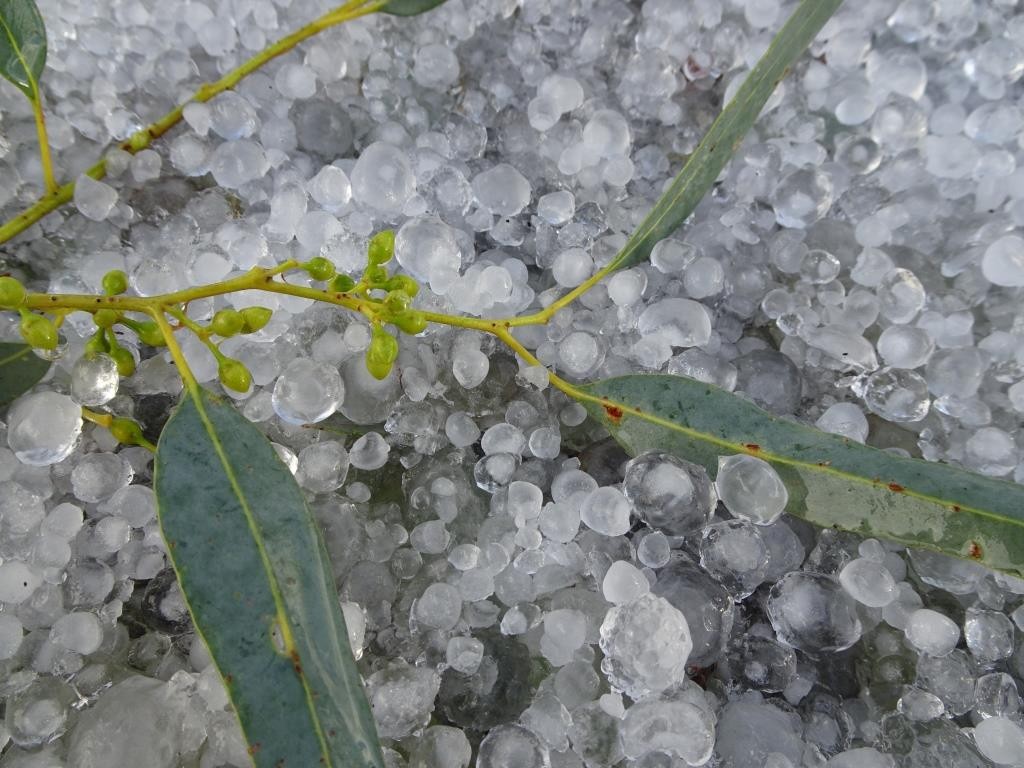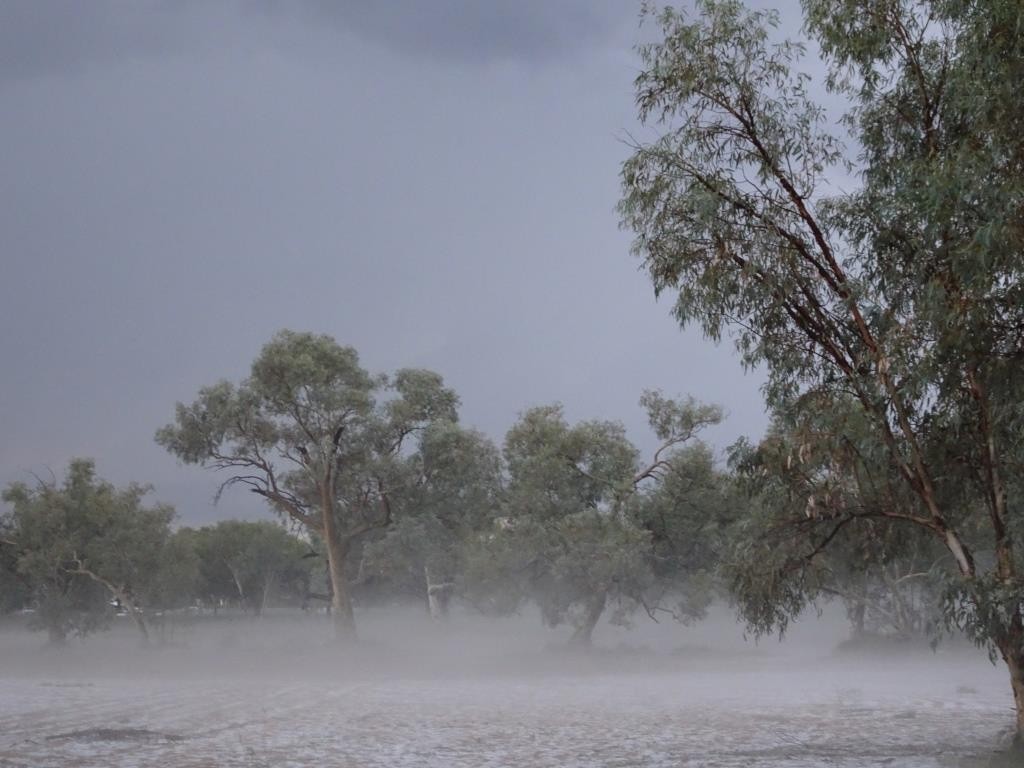Alice Springs residents were shocked on Friday 17th June 2016, when a large hail storm hit the town. The storm raised a lot of excitement, but the damage to infrastructure was very clear. As far as our gardens go, hail can damage plants by sheer force of their fall, or through accumulation of weight to limbs. Hailstones can cause leaves to become shredded or pock-marked. Hail can be damaging to vegetables and decimate harvests; and large rainfall events can cause citrus to expand to bursting point. For trees, their stems can split or break, especially when hail storms are combined with strong winds and lightening (as we saw last week). In addition to visually obvious damage, plants affected by hail are more susceptible to disease, pests and rot.
The severity to which our gardens are affected by hail depends on the type of plants, as well as the force and size of the hailstones; though seedlings and plants with fresh shoots are the most affected by hail. Thankfully, the hailstorm arrived in the middle of June, when plant growth rates are slow and repair is achievable. Garden for Wildlife has some tips on how to care for hail-damaged plants:
• Trim off broken stems, branches and leaves. Pruning will help your plants to invest energy to regrowth, rather than damage repair. For trees, prune away the most affected branches and remove limbs that have severe gouges or tears.
• Remove damaged fruits to avoid pests.
• Apply fertiliser (liquid or compost tea) to the impacted plants, as this will provide the plants with the nutrition necessary to stimulate regrowth and bring on new foliage.
• Apply fungicide to prevent rot from entering plant wounds before they are able to seal.
• Keep an eye out for any early signs of pest or disease and treat accordingly.
• Place a layer of mulch around the base of the plants. Mulch will help protect the plants from any cold weather that follows and soil compaction from further storms, as well as help to retain water needed to regrow.
When hail storms or frost is forecast, take the following steps to help protect your plants from further damage:
• Place plastic sleeve tree guards, buckets, garbage cans or other items over plants or use a tarp over the vegetable garden like a tent: This creates a layer of still air and reduces wind chill.
• Relocate potted plants to protected areas (e.g. the verandah).
• Tie the leaves of tufted plants together to protect the growing point.
• Use a pressure sprayer to mist water over stone-fruit flowers and shoots just before sunset, as this freezes into a protective film of ice.
Don’t forget that local native plants, specific to your area, will be hardier than other native or ornamental plants (they’ve adapted to local growing conditions). By choosing the right plants for your block (check out the Vegetation Maps on our website), you can create a self-sustaining garden that will naturally fight back with minimal effort from you. Good luck!

